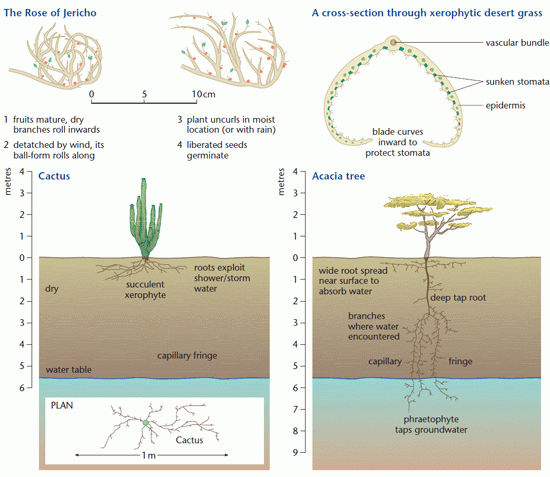Desert conditions and plant adaptations
After studying this section you should be able to understand that:
- plants have to adapt to survive in the desert environment
- soils have a unique appearance and composition in desert areas
Many plants in the arid realm are physiologically specialised, adapted in form and structure. Within the desert there are innumerable niche locations for plants even though the soil is susceptible, skeletal, saline and immature.
Adaptations of plants
These include:
- a degree of ephemeralism, remaining dormant in the soil as fruits or seeds
- unique dispersal systems, i.e. barbs and bristles
- xerophytic, water-seeking
- root adaptations, tap roots or heavy lateral branching
- small leaves, with sunken or restricted openings
- pale, reflective, leaves
- hairs, spines or thick waxy–walled leaves, evolved to replace what might nominally exist

Soils that form in arid climates are predominantly mineral soils with low organic content. The repeated accumulation of water in some soils causes distinct salt layers to form. Calcium carbonate precipitated from solution may cement sand and gravel into hard layers called ‘calcrete’ that form layers up to 50 m thick.
Caliche is a reddish-brown to white layer found in many desert soils. Caliche commonly occurs as nodules or as coatings on mineral grains formed by the complicated interaction between water and carbon dioxide released by plant roots or by decaying organic material.
